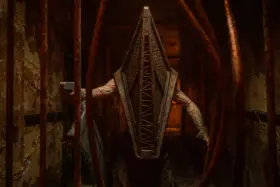For years, the world of Souls-like games felt like an exclusive club with a brutal initiation rite. I’d watch friends celebrate victories in Dark Souls or Bloodborne that seemed born from sheer masochism.
The culture was intimidating, built on cryptic lore and two soul-crushing words: “Git Gud.”
As a JRPG fan who valued story above all, the appeal was lost on me. Why would I subject myself to that kind of punishment?
Then came Code Vein, a game immediately labeled “anime Dark Souls.” For many, this was a dismissal. For me, it was a beacon.
Why Code Vein Wasn’t Meant to Dethrone Dark Souls
The game’s dramatic anime aesthetic and the promise of an overt narrative felt like a hand reaching out across a gulf of difficulty I never thought I’d cross.
This created a fascinating rift in its reception. Critics gave it “Mixed” reviews, often citing combat that lacked the weight of its inspirations and derivative level design. Yet on Steam, players gave it a resounding “Very Positive.”
This disconnect is the entire point. Code Vein wasn’t meant to dethrone Dark Souls; it was meant to translate it. The very things critics saw as flaws were, for a new audience, its greatest features.
It took the genre’s compelling loop, tension, exploration, triumphant victory, and wrapped it in a package that was actively welcoming. It was my gateway, the game that taught me the language of the Souls-like and gave me the confidence to not only try Elden Ring but to stand on the verge of conquering it.
How Code Vein Stood Out in a Sea of RPG Games
My journey began not with combat, but with an emotional investment. I spent nearly two hours in what is, without exaggeration, one of the most detailed character creators in any RPG. By the time I emerged into the ruined world, I wasn’t playing a generic avatar; I was playing my character, a hero I was already invested in protecting. This attachment is a crucial buffer against the frustration of early deaths.
That investment was immediately reinforced by a story that, unlike its predecessors, is clear and easy to follow. You are a Revenant, an immortal vampire-like being who needs blood to avoid degenerating into a mindless beast called the Lost.
Your character has the unique ability to save your small community of survivors from this fate, providing a tangible and compelling motivation. This narrative, filled with JRPG tropes and emotional character arcs, provides a powerful “why” for every challenge.
Every brutal boss fight was a necessary step in a story I was eager to see through. The “die and repeat” loop was no longer just about memorizing attack patterns; it was about pushing forward to protect the characters I was growing to care about.
Code Vein masterfully lowers the genre’s mechanical barriers with two key systems. The first is the AI companion. The game is balanced around having a partner by your side who will draw enemy aggression, deal damage, and even revive you.
This is a monumental safety net for newcomers, softening the sting of death. More importantly, it organically teaches the crucial skill of aggro management. You learn when to attack and when to heal by observing how enemies shift their focus between you and your partner, which is a lesson normally learned through dozens of frustrating solo deaths.
The second, and most innovative, feature is the Blood Code system. Blood Codes are essentially classes that you can swap between at any time, with no penalty. Stuck on a fast boss with your slow, heavy-hitting build? Simply pause, switch to a nimble caster archetype, and try a new strategy in seconds. This completely removes the “build anxiety” that can paralyze new players.
The game encourages experimentation, reframing failure not as a setback, but as a data point, an invitation to analyze, re-spec, and succeed.
What Are Code Vein’s Shortcomings?
Of course, the game isn’t flawless. The combat can feel “floaty” compared to FromSoftware’s titles, and many levels are linear corridors rather than intricately designed worlds. And then there is the Cathedral of Sacred Blood, a mid-game level infamous for its maddeningly confusing maze of identical white hallways. Getting lost is a certainty, and the frustration is immense.
Yet, conquering the Cathedral is an unintentional graduation exam. It forces you to rely on patience, observation, and sheer stubbornness, the core skills of any Souls player. If you can survive the Cathedral, you are ready for anything.
Should You Play Code Vein?
My journey through Code Vein was transformative. It equipped me with a new set of skills that made the transition to Elden Ring, which makes the Dark Souls brand of dread work in an open world, feel like a natural next step. The core combat loop of managing stamina and learning attack patterns transferred seamlessly.
The companion system made the strategic use of Elden Ring‘s Spirit Ashes immediately intuitive. The Blood Code system taught me the vital lesson of adaptation, preparing me for the robust customization of Ashes of War.
Code Vein was my translator. It took a genre defined by its obscurity and made it legible and engaging. It didn’t remove the challenge, but it gave me the tools and motivation to overcome it. If you’ve ever stood on the outside of that fog gate, intimidated and unsure, I can’t recommend this game enough. Let the anime vampires show you the way.






